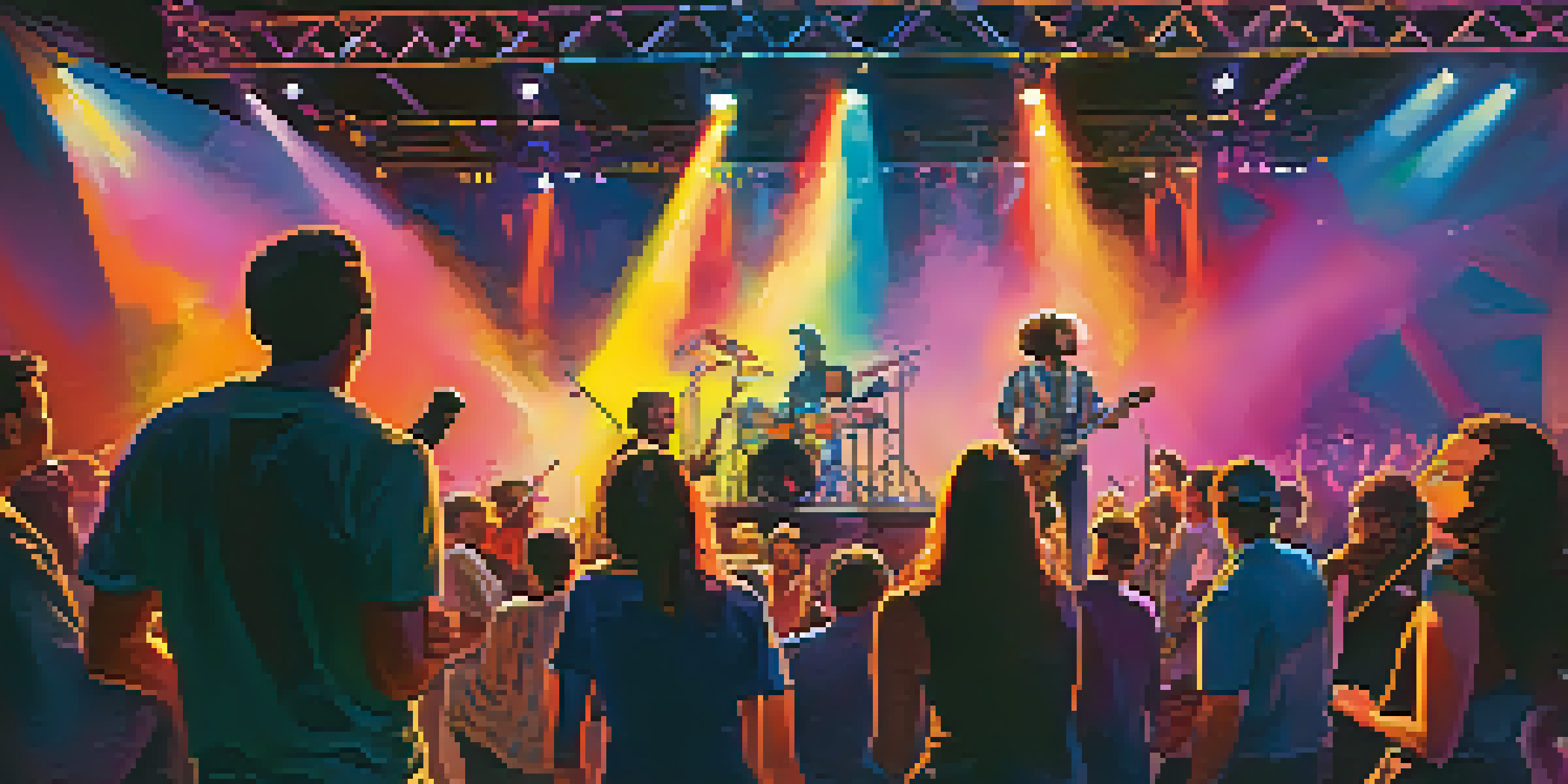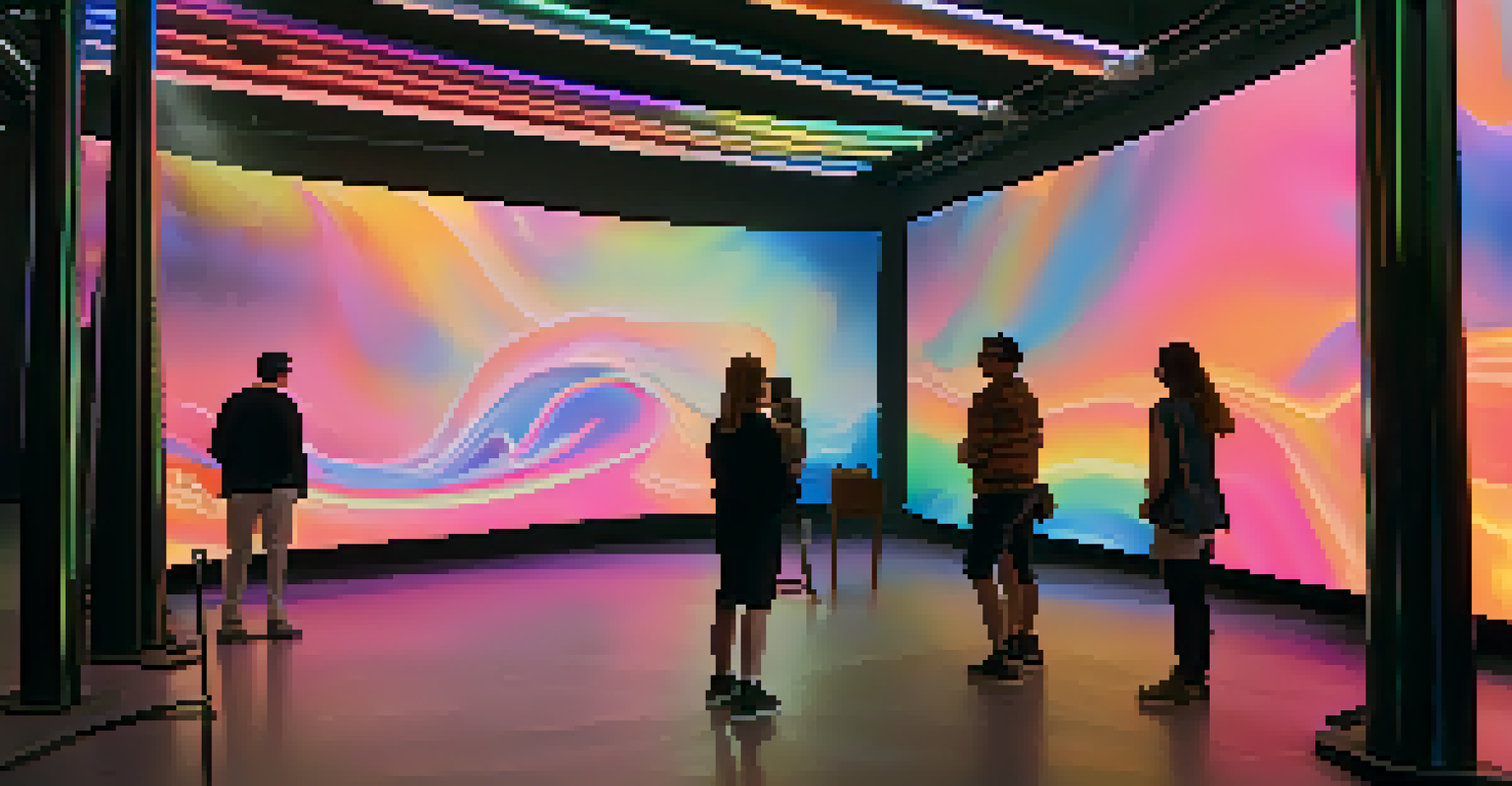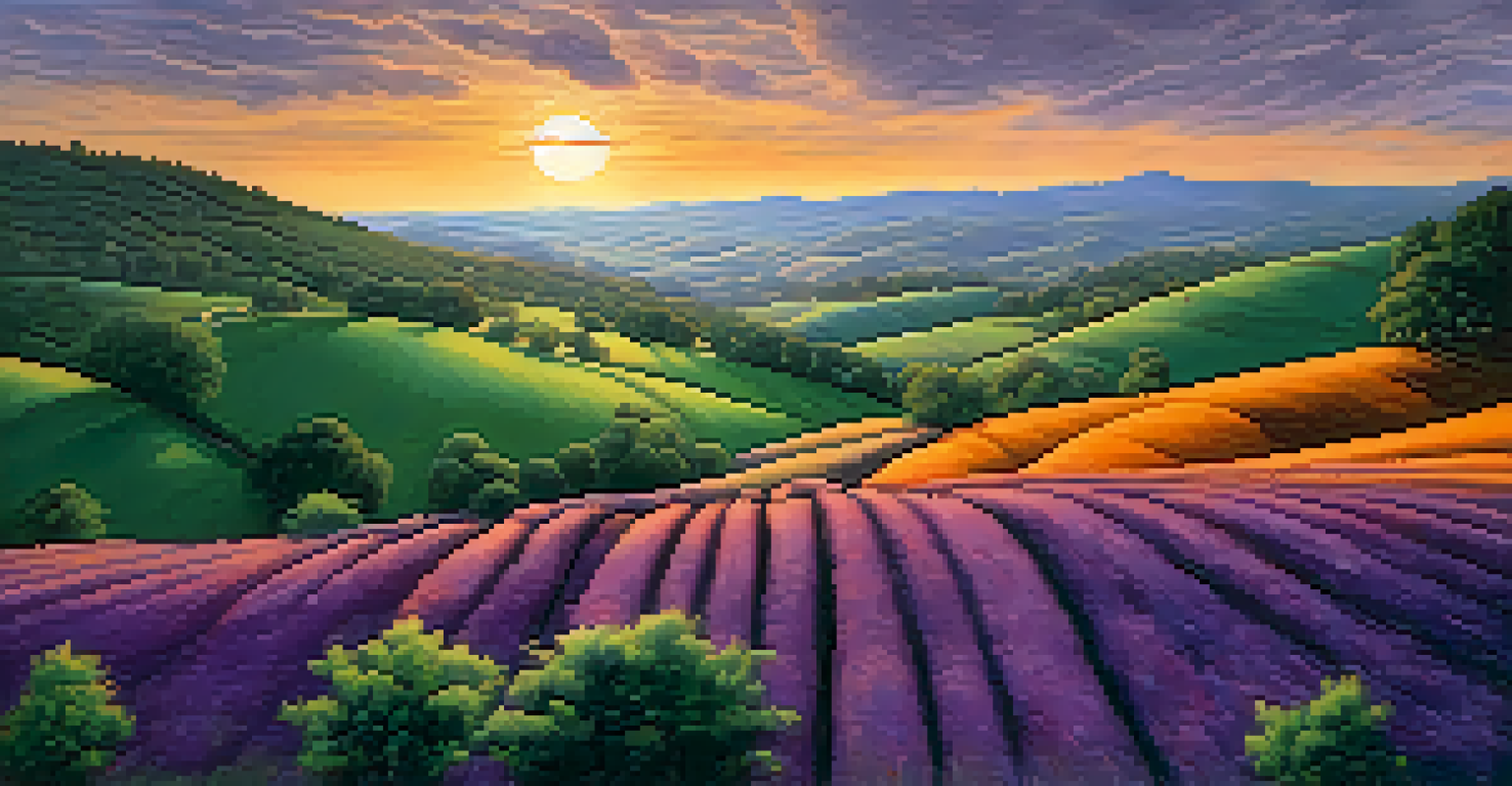Exploring the Intersection of Music and Visual Art Forms

Understanding the Connection Between Music and Visual Art
At first glance, music and visual art might seem like separate worlds, but they share a profound connection. Both forms of expression evoke emotions, tell stories, and allow for individual interpretation. Just as a painting can stir feelings through color and composition, a melody can resonate deeply within us, shaping our experiences and memories.
Music is the shorthand of emotion.
This connection becomes especially clear during live performances where visual elements like lighting and stage design enhance the music experience. Imagine a concert where the lights pulse in time with the beat, creating a multi-sensory feast that captivates the audience. In this way, musicians and visual artists often collaborate, blurring the lines between their disciplines.
Moreover, both art forms influence one another; a musician might draw inspiration from a painting, while a visual artist may find motivation in a particular song. This symbiotic relationship enriches the creative landscape, allowing for new and innovative works that resonate on multiple levels.
Historical Collaborations: Music Meets Visual Arts
Throughout history, there have been numerous iconic collaborations between musicians and visual artists that have left a lasting impact. One notable example is the partnership between musician Wassily Kandinsky and composer Arnold Schoenberg, who sought to create a synesthetic experience where colors and sounds merged. Their work exemplified the idea that art transcends mediums, inviting audiences to engage on a deeper level.

Another famous collaboration is the 'Blue Period' of Pablo Picasso, during which he created works inspired by the melancholic music of the time. Picasso’s paintings captured the emotional essence of the music, illustrating how visual art can serve as a reflection of sound. This intertwining of music and visual arts has inspired countless artists to explore similar avenues.
Music and Art Share Deep Connections
Both forms of expression evoke emotions and tell stories, often influencing and inspiring each other.
These historical examples remind us that the fusion of music and visual art is not a new phenomenon but rather a continuous conversation that evolves over time. As artists push boundaries and explore new technologies, this intersection remains a fertile ground for creativity.
The Role of Technology in Merging Music and Visual Art
In today's digital age, technology has revolutionized the way music and visual art interact. With tools like virtual reality and interactive installations, artists can create immersive experiences that engage multiple senses. For example, VR concerts allow audiences to experience music in a fully realized 3D environment, where visuals respond dynamically to the sound.
Art is not freedom from discipline, but disciplined freedom.
Moreover, software like Ableton Live and Processing enables artists to blend audio and visual elements seamlessly. This integration allows for real-time manipulation of visuals based on musical cues, creating a captivating experience that evolves with the performance. Such technological advancements have opened up a world of possibilities for artists seeking to innovate.
As we look to the future, the potential for collaboration between musicians and visual artists through technology is limitless. This ongoing evolution invites both creators and audiences to explore new dimensions of artistic expression.
Exploring Synesthesia: Where Senses Intertwine
Synesthesia, a condition where one sense is simultaneously perceived as another, provides a fascinating lens to explore the connection between music and visual art. For some individuals, listening to music may evoke specific colors or shapes, creating a vivid mental landscape. This phenomenon has intrigued artists and scientists alike, leading to a deeper understanding of how our senses interact.
Many renowned artists, like Vincent van Gogh and Wassily Kandinsky, experienced synesthesia, influencing their respective works. Their unique perspectives allowed them to create art that transcended traditional boundaries, inviting viewers to experience music visually. This blending of senses challenges us to rethink how we perceive and interact with the world around us.
Technology Enhances Artistic Fusion
Advancements in technology allow for immersive experiences that merge music and visual art in innovative ways.
By exploring synesthesia, we can unlock new ways of appreciating both music and visual art. This exploration encourages a broader understanding of creativity, where the boundaries of art dissolve, leading to a richer cultural landscape.
Case Study: Music Videos as a Visual Art Form
Music videos have emerged as a popular medium that beautifully illustrates the intersection of music and visual art. They serve as a canvas for storytelling, merging sound and visuals to create a narrative that enhances the song's message. Iconic music videos, such as Michael Jackson's 'Thriller,' have transformed the way we perceive music, turning them into cultural phenomena.
The artistry behind these videos often involves collaboration with talented directors, choreographers, and visual artists. These professionals craft visuals that complement the music, creating a cohesive experience that captivates audiences. From striking visuals to innovative choreography, music videos have become a legitimate form of visual art.
As platforms like YouTube and TikTok continue to grow, the significance of music videos in the digital landscape is undeniable. They not only promote artists' work but also push the boundaries of creative expression, inviting viewers into a world where music and visual art coexist harmoniously.
Art Exhibitions: Celebrating the Harmony of Sound and Sight
Art exhibitions that focus on the relationship between music and visual art offer a unique experience for attendees. These events often feature installations where sound and visuals come together, allowing visitors to immerse themselves in an interactive environment. Galleries may showcase multimedia works that engage the audience's senses and spark conversation about the creative process.
One notable example is the 'teamLab Borderless' exhibition in Tokyo, where digital art installations respond to sound and movement. This immersive experience encourages people to reflect on the relationship between the two art forms, highlighting how they can coexist in harmony. Such exhibitions invite us to explore the boundaries of creativity, encouraging collaboration among artists.
Future Collaboration Looks Promising
The ongoing collaboration between music and visual art is set to evolve, fostering new creative expressions and experiences.
By attending these exhibitions, audiences can appreciate the dynamic interplay between music and visual art firsthand. These experiences foster a deeper understanding of the creative process and inspire new artistic endeavors.
The Future of Music and Visual Art Collaboration
As we look ahead, the collaboration between music and visual art promises to be more vibrant and innovative than ever. With advancements in technology and a growing appreciation for interdisciplinary art forms, artists are encouraged to explore new ways to express their creativity. This evolution will likely lead to the emergence of new genres and styles that blur the lines between music and visual art.
Moreover, as audiences become increasingly accustomed to immersive experiences, there will be a greater demand for collaborative projects that engage multiple senses. This trend could inspire artists to experiment with unconventional materials and mediums, pushing the boundaries of what art can be. The blending of disciplines will create opportunities for fresh perspectives and unexpected outcomes.

Ultimately, the future of music and visual art collaboration is bright, with endless possibilities for innovation and creativity. As artists continue to inspire one another, we can look forward to a rich tapestry of expressions that celebrate the beauty of both sound and sight.